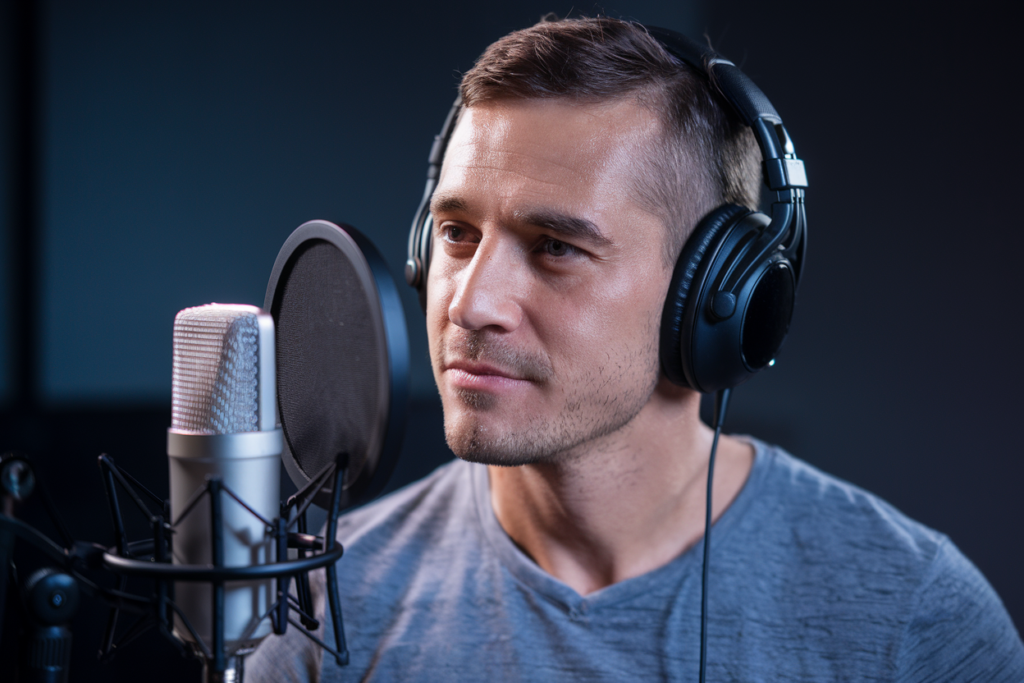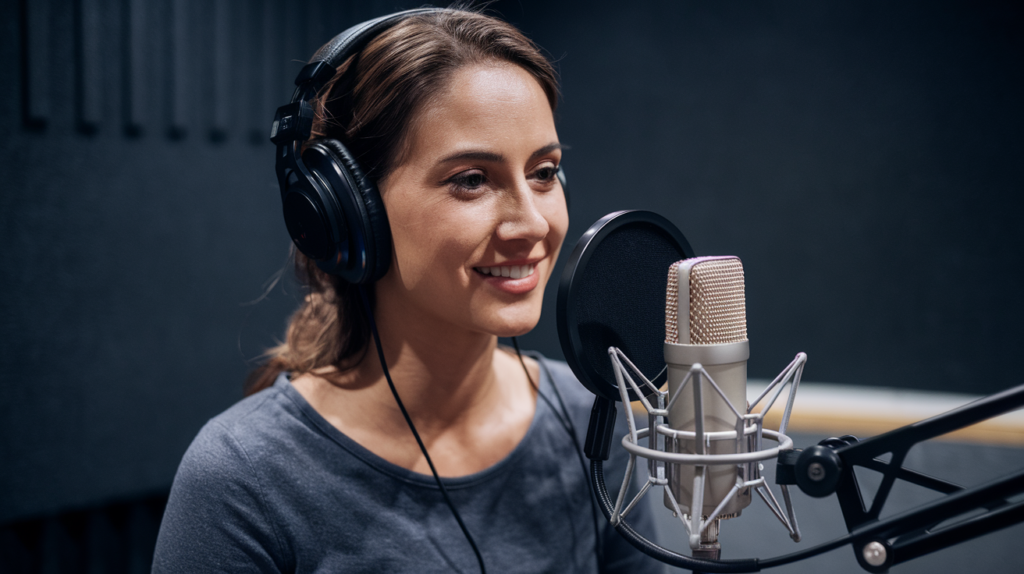Key Takeaways
- Diversity of Romanian Accents: Each region in Romania has its own unique accent, which can enhance voice acting performances and deepen audience engagement.
- Cultural Significance: Understanding the cultural context behind each accent allows voice actors to connect authentically with their characters and audiences.
- Emotional Resonance: Mastering accents not only adds authenticity but also amplifies emotional impact, making narratives more relatable and engaging for listeners.
- Accent Training Importance: To effectively deliver diverse regional accents, voice actors should invest in accent training and work with dialect coaches for accurate pronunciation and intonation.
- Character Development Techniques: Developing rich character backstories informed by regional accents enhances performance depth, allowing actors to embody roles convincingly.
- Challenges of Accent Mastery: Voice actors face hurdles such as pronunciation accuracy and audience perception; overcoming these challenges requires practice and adaptability.
Ever wondered how voice acting can bring to life the rich tapestry of Romanian accents? Each region in Romania boasts its own unique dialect, and mastering these nuances can elevate your performances from good to unforgettable. Whether you’re a budding actor or simply curious about the art, understanding these accents opens up a world of storytelling possibilities.
Overview of Voice Acting
Voice acting plays a crucial role in various media, from animations to commercials and audiobooks. It involves using one’s voice to bring characters and narratives to life. Understanding different accents enhances this craft, especially in a linguistically rich country like Romania.
When you think about Romanian accents, consider the diversity across regions. Each accent carries unique characteristics that can influence how a message is received. Mastering these nuances allows voice actors to connect better with their audience. Whether you’re aiming for authenticity in storytelling or seeking to evoke specific emotions, grasping regional dialects becomes essential.
Voice actors often serve as the bridge between content and its audience. They transform scripts into engaging performances through tone, pitch, and rhythm. By incorporating distinct Romanian accents into your voiceovers, you add depth and authenticity that captivates listeners. This attention to detail not only enriches the narrative but also showcases your versatility as a voice artist.
In today’s competitive landscape, honing your skills as a voice over talent sets you apart. Many clients look for artists who can adapt their delivery based on cultural context or character requirements. Developing proficiency in various accents expands your repertoire, making you more appealing for diverse projects.
Importance of Accents in Voice Acting
Accents play a vital role in voice acting, especially when portraying characters from different regions. Mastering various Romanian accents enhances your performance and brings authenticity to the story you’re telling.
Cultural Significance
Romanian accents carry rich cultural histories that reflect regional identities. Each accent encapsulates unique expressions, idioms, and tones that resonate with local audiences. As a voice artist, tapping into these nuances allows you to connect more deeply with the culture you’re representing. This connection can foster trust and relatability among listeners, making your character more believable.
Emotional Impact
Accents evoke emotions and set the tone for a narrative. A well-executed Romanian accent can convey warmth, humor, or even tension depending on the context. When you adopt an authentic accent as a voice actor, it amplifies the emotional stakes of your performance. Listeners respond to these subtle cues; they engage on a deeper level when they hear familiar sounds that resonate with their experiences or backgrounds. By mastering these accents, you not only enrich your storytelling but also enhance audience engagement through emotional resonance.
Regional Romanian Accents
Romania boasts a rich tapestry of regional accents, each contributing unique flavors to voice acting. Understanding these accents can elevate your projects and create authentic connections with audiences.
Transylvanian Accent
The Transylvanian accent is renowned for its melodic quality and distinctive vowel sounds. You’ll often notice a softer intonation that reflects the region’s cultural influences. Voice actors using this accent can evoke mystery and depth, perfect for characters in fantasy or historical narratives. Incorporating this accent into voiceovers lends an air of authenticity, making it easier for listeners to immerse themselves in the story.
Moldovan Accent
The Moldovan accent stands out with its rhythmic speech patterns and specific phonetic characteristics. It carries a sense of warmth and approachability, which makes it ideal for friendly characters or community-oriented narratives. As a voice artist, mastering the Moldovan accent allows you to connect intimately with your audience, adding relatability to your performances. Its nuances can also highlight regional stories that resonate deeply with local listeners.
Wallachian Accent
Known for its straightforwardness and clarity, the Wallachian accent is prevalent in urban settings like Bucharest. This accent features strong consonants and clear pronunciation, making it effective for commercial voiceovers or informative content. When you adopt the Wallachian accent as a voice actor, you project confidence and professionalism—essential qualities that clients appreciate when seeking engaging narrations or promotional materials.
Incorporating these regional accents not only enhances storytelling but also showcases your versatility as a voice talent. By mastering them, you’re equipped to meet diverse client needs while captivating audiences across Romania’s vibrant cultural landscape.
Techniques for Voice Actors
Voice actors must master various techniques to excel in their craft, especially when dealing with different Romanian accents. These skills not only enhance your performance but also enrich the storytelling process.
Accent Training
Accent training is essential for voice actors aiming to deliver authentic performances. You might consider working with a dialect coach who specializes in Romanian accents. Practicing specific sounds and intonations helps internalize the unique characteristics of each accent. Listening to native speakers through audio or video resources can also provide valuable insights into pronunciation and rhythm. Regularly recording yourself allows for self-evaluation, making it easier to pinpoint areas for improvement.
Character Development
Character development enhances your ability to embody diverse roles convincingly. Understanding the cultural background tied to each accent is crucial; it informs how characters express emotions and interact with others. Create detailed backstories for your characters, considering how their regional identity shapes their worldview and speech patterns. Experimenting with different tones, pitches, and emotional ranges will help you find the voice that resonates best with each character’s persona. Engaging deeply with these elements makes your performances more relatable and impactful, drawing audiences into the narrative seamlessly.
By honing these techniques, you’ll elevate your skills as a voice actor while effectively utilizing Romanian accents to engage listeners authentically.
Challenges of Voice Acting in Accents
Voice acting in different Romanian accents presents unique challenges. Mastering pronunciation and intonation for each accent requires extensive practice. Each regional dialect carries its own set of phonetic rules, making it crucial to understand these nuances.
One significant challenge is the emotional conveyance tied to accents. A voice actor must capture not just the sound but also the cultural essence behind a specific accent. This task involves deep research into the history and societal context of each region, ensuring authenticity in performance.
Another hurdle lies in audience perception. Listeners may have preconceived notions about certain accents, impacting their connection with characters or narratives. If an accent feels forced or inaccurate, it can distract from the story being told, diminishing engagement.
Moreover, varying speech patterns complicate delivery. Some accents feature faster or slower rhythms than others, requiring adaptability from voice artists as they adjust their pacing accordingly. Consistency becomes vital; slipping out of an accent mid-performance could break immersion for your audience.
Accent training plays a pivotal role in overcoming these challenges. Working with professionals can aid you in honing your skills while providing valuable feedback on performance elements such as tone and clarity.
While mastering Romanian accents poses obstacles for voice actors, embracing these challenges fosters growth and enhances storytelling richness across diverse media formats like animations and audiobooks.
Conclusion
Mastering Romanian accents in voice acting isn’t just about pronunciation; it’s about connecting with the culture and emotions behind each dialect. By diving into the unique characteristics of accents like Transylvanian, Moldovan, and Wallachian, you open up a world of storytelling possibilities.
These accents add authenticity to your performances and create deeper connections with your audience. Embracing the challenges that come with accent training can lead to significant growth as an artist. As you refine your skills you’ll not only enhance your versatility but also enrich the narratives you bring to life.
So whether you’re an aspiring voice actor or simply interested in this art form remember that understanding regional nuances can elevate your work and resonate more profoundly with listeners across Romania’s diverse cultural landscape.
Frequently Asked Questions
What is the significance of Romanian accents in voice acting?
Romanian accents are vital in voice acting as they add authenticity and depth to performances. Each region’s distinct dialect conveys cultural nuances that enrich storytelling, helping actors connect with audiences on a deeper level.
How do regional accents influence audience perception?
Regional accents can significantly shape how an audience perceives characters and narratives. They evoke specific emotions and contexts, making characters more relatable and believable, which enhances overall engagement.
What are some key Romanian accents explored in the article?
The article highlights three main Romanian accents: Transylvanian, Moldovan, and Wallachian. Each accent possesses unique qualities that suit different storytelling styles—Transylvanian for mystery, Moldovan for warmth, and Wallachian for clarity.
Why is accent training important for voice actors?
Accent training is crucial for voice actors to deliver authentic performances. It helps them master pronunciation, intonation, and the cultural essence of each accent, ensuring their portrayals resonate with audiences effectively.
What challenges do voice actors face when mastering Romanian accents?
Voice actors may struggle with unique phonetic rules, varying speech patterns, and audience perceptions tied to specific accents. Overcoming these challenges requires extensive practice and deep research into each region’s cultural background.







